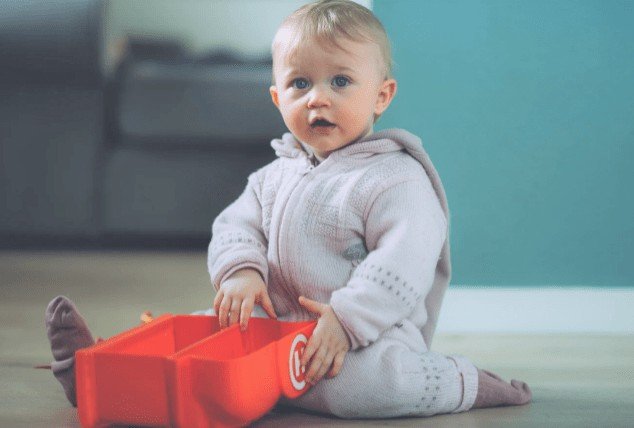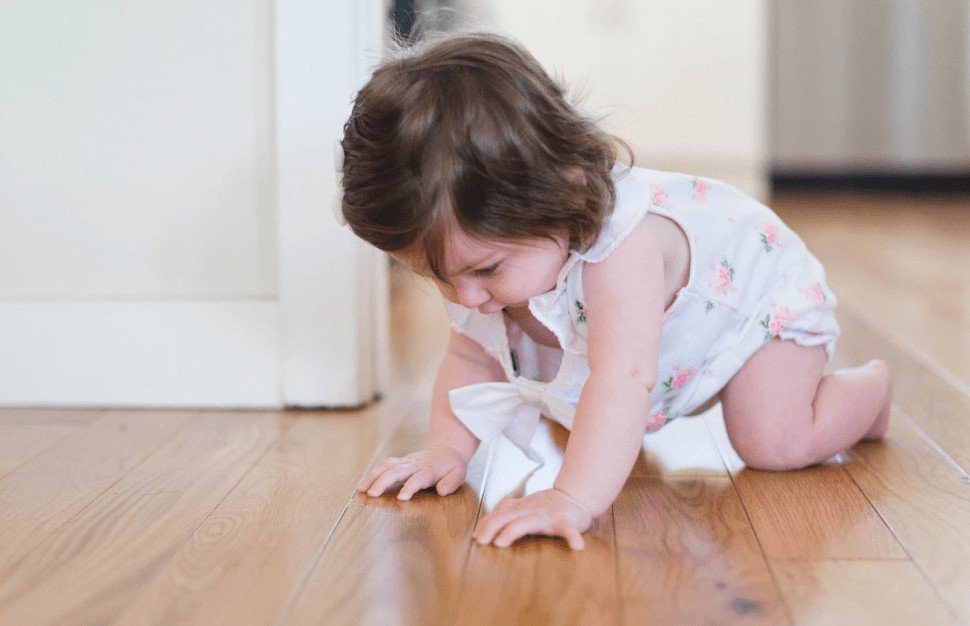At 4 months, hopefully, your life is a bit less hectic as your little one settles into a better routine. For the past month, the two of you have been spending more time interacting and playing with each other, thanks to the new skills she has recently acquired. During the fourth month, your baby will discover new skills such as sitting up and rolling over. All these will help open up new and exciting ways to play!
The fourth month is when parents start to truly enjoy playing with their babies. It is also when playtime and interaction with parents become more important to a baby’s overall development.
What are the most critical developmental milestones for your 4-month-old baby? How can you provide a stimulating environment to boost their development? Read on to find more.
Developmental Milestones
Motor Skills
- May be able to roll over from tummy to back: Many parents are anxious to see when their baby can roll over. In fact, many parents witness their baby’s first rollover as a complete surprise. Yes, it may sound counter-intuitive, but many babies just somehow learned to turn magically with no prior attempts. As your baby approaches four months, be sure to place them in safe areas all the time. A common pitfall for many caregivers is that they leave the baby near the edge of a bed or sofa, and the baby suddenly rolls over for the first time.
- Brings hands to her mouth: You may have already noticed your little one trying to stuff her fist in her mouth. At 4 months, your little one explores the world by sticking everything she can reach into her mouth. This is an appropriate time to introduce hand-held toys such as teething toys or sensory balls. Be sure to only give your little one safe items. In addition, sanitize her toys regularly to prevent risks of infections.
- Sits with support: After staying in the lying position for three months, your little one will be thrilled to find out that, the world can be seen from a completely new perspective. With your support, she will be able to sit briefly. To support your baby, you can hold her upright or with the assistance of an infant seat. At four months, your little one does not yet have enough trunk muscle strength not to fall forward or to the side. Don’t forget to move sharp or dangerous objects out of her way in case of following.
Sensory Development
- Follows moving objects and sounds from side to side: Even at three months, your little one was able to recognize the direction of sounds. This month, she can follow the source of the sound from side to side, thanks to the strengthened neck muscles. In addition, she can follow moving objects with her eyes and rotate her head as well.
- Starts to teeth: Teething usually starts between 4 to 6 months for most babies. If your 4-month-old seems to be a bit extra fuzzy and drools a lot, it may be a sign. Giving her something safe to bite on will help her reduce the pain. Parents may get anxious to see the first tooth bud coming out, but if you don’t see it this month or even in the next several months, it is also perfectly normal.
Social-Emotional and Cognitive Skills
- Can speak a combination of vowels and consonants: Ever since she discovered her voice last month, your little one has been practicing her “communication skills”. This month, she will learn to speak words that combine vowels and consonants. For example, the most common new word spoken by many babies is “ah goo”.
- Frowns when upset: In addition to crying, your baby now has another way to express her dissatisfaction – frowning. She may scrunch up her eyes when you don’t give her what she wants, or if she feels bored with repetitive activities. The good news is that, as your little one becomes more expressive, figuring out what she wants it much easier than before.
- Learns cause and effect: Along with the development of her body, your baby’s intelligence has been developing rapidly, too. She may find out that when she kicks the crib, the mobile above jiggles. She then learns to connect these two things together. This is a great time to introduce toys that can teach cause and effect. For example, a globe that plays music when she swipes it to the left, and changes to animal sounds when she swipes it to the right.
Activities with Your 4-Month-Old Baby
1. Introducing Toys that Invites Her to Explore
Now that your little bundle of smiles has learned to roll over, they are not just satisfied with lying on the floor or bed all day. They are smart enough to realize that there is a whole new world out there. Besides experimenting with toys, many babies at this stage love to be held upright. If you try to lay her in your arms, she will reach for your shoulder or chin to demand a different position.
Here are some activity ideas to help her stay upright:
- Introducing toys with upright seats. For example, jumpers, rockers, swings, and rockers. Babies love to jump up and down or bounce back and forth.
- Carry her in a baby carrier and walk around the house.
- Hold her and let her touch, smell, and listen to different objects in the house. This helps to satisfy her curiosity.
- Give her teething toys such as a teething gel, teething keys, or mittens. This can help alleviate their teething pain and prevent them from biting hazardous objects.
- Show her how to play with a rattle or a ball with finger holes. 4-month-old babies love to grasp things and shake them.
- Now that she is losing interest in crib mobiles, show her toys that can light up, can make sounds, or move.
RELATED: Best Baby Walker for Carpet
2. Introduce Her to Nature and the Outside World
After staying mostly inside the house for the first four months, your little one may have gotten bored. Who can blame them? Taking them out is not only a good way to change the scenery but also an excellent way to introduce her to nature. Plus, fresh air helps strengthen the immune system and helps them develop resistance to allergies. As a matter of fact, sleep experts in some Nordic countries such as Denmark believe that fresh air helps babies sleep better.
Here are some outdoor activity ideas:
- Take her out to a park on the stroller
- Let her nap on the patio or deck if the weather permits, like in the Nordic countries
- Have a picnic in the park, or at the convenience of your backyard
- Take her to a local zoo and show her some animals
- Take her outside to see new things such as a pond, trees of different colors, different shapes of buildings, etc.
3. Continue to Read
You probably have already started reading to your little tot since day 1, or better yet, since the second half of your pregnancy. Keep it up! Now you can introduce books with lots of pictures and bright colors. As mentioned in the 3-month milestones, it doesn’t have to be an infant book with only a handful of words. Toddler books, a novel, daily newspapers, or even work documents, can be excellent sources for her to listen to. The key is to continue the verbal communication with her.
Fun reading ideas:
- Read a toddler’s book that has a lot of pictures and a wide range of objects. Point to them and explain these new things to her.
- To make tummy time more fun, place a board book in front of her. Let her enjoy the various colors and shapes in the book and forget about the tension in her neck.
- Introduce a musical sound book, especially one with toys, that can light up.
- Keep reading to her. It can be a piece of newspaper, a magazine, or even something in a foreign language.
Sources
Cognitive developmental milestones: https://www.verywellmind.com/cognitive-developmental-milestones-2795109
What is hand-eye coordination: https://study.com/academy/lesson/what-is-hand-eye-coordination-definition-skills-development.html
Last: 3-Month-Old Milestones and Activities
Next: 5-Month-Old Milestones and Activities

Dr. Leah Alexander, MD, FAAP began practicing pediatrics at Elizabeth Pediatric Group of New Jersey in 2000. She has been an independently contracted pediatrician with Medical Doctors Associates at Pediatricare Associates of New Jersey since 2005.








